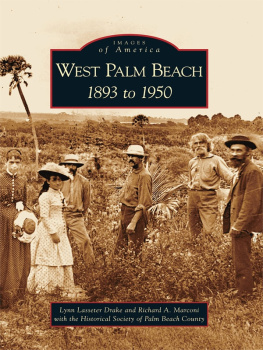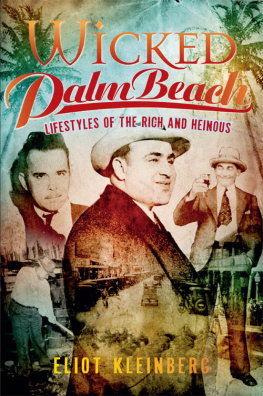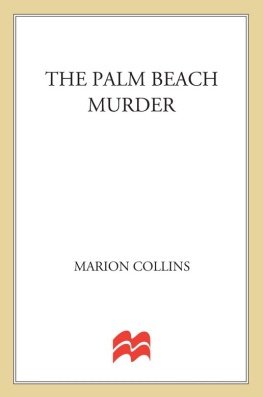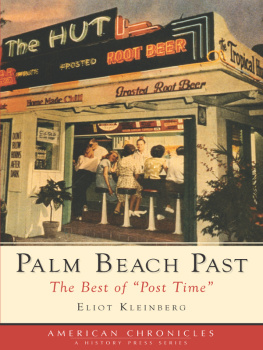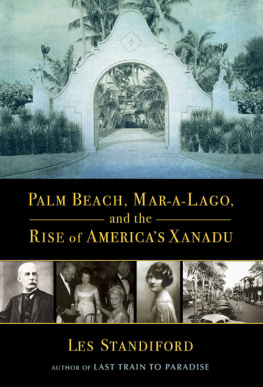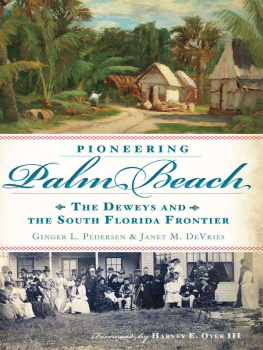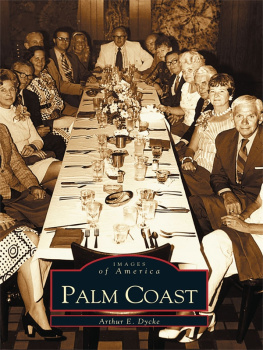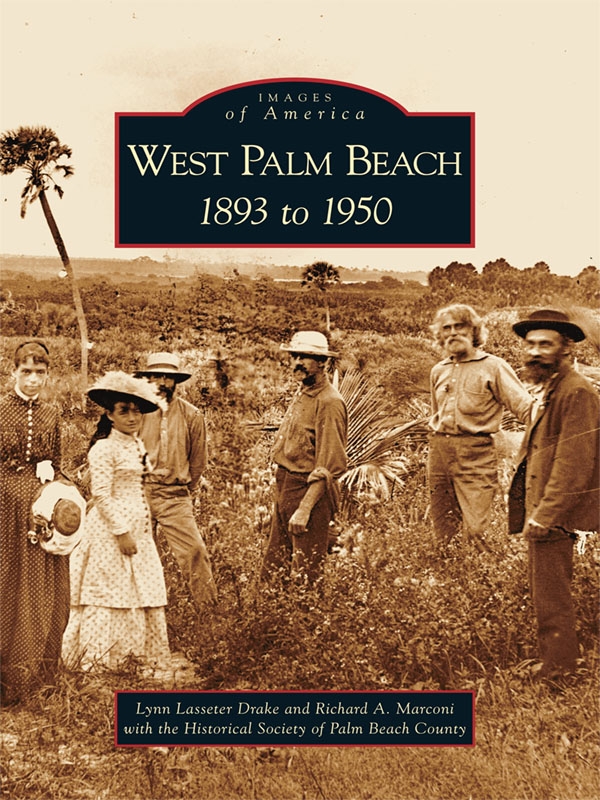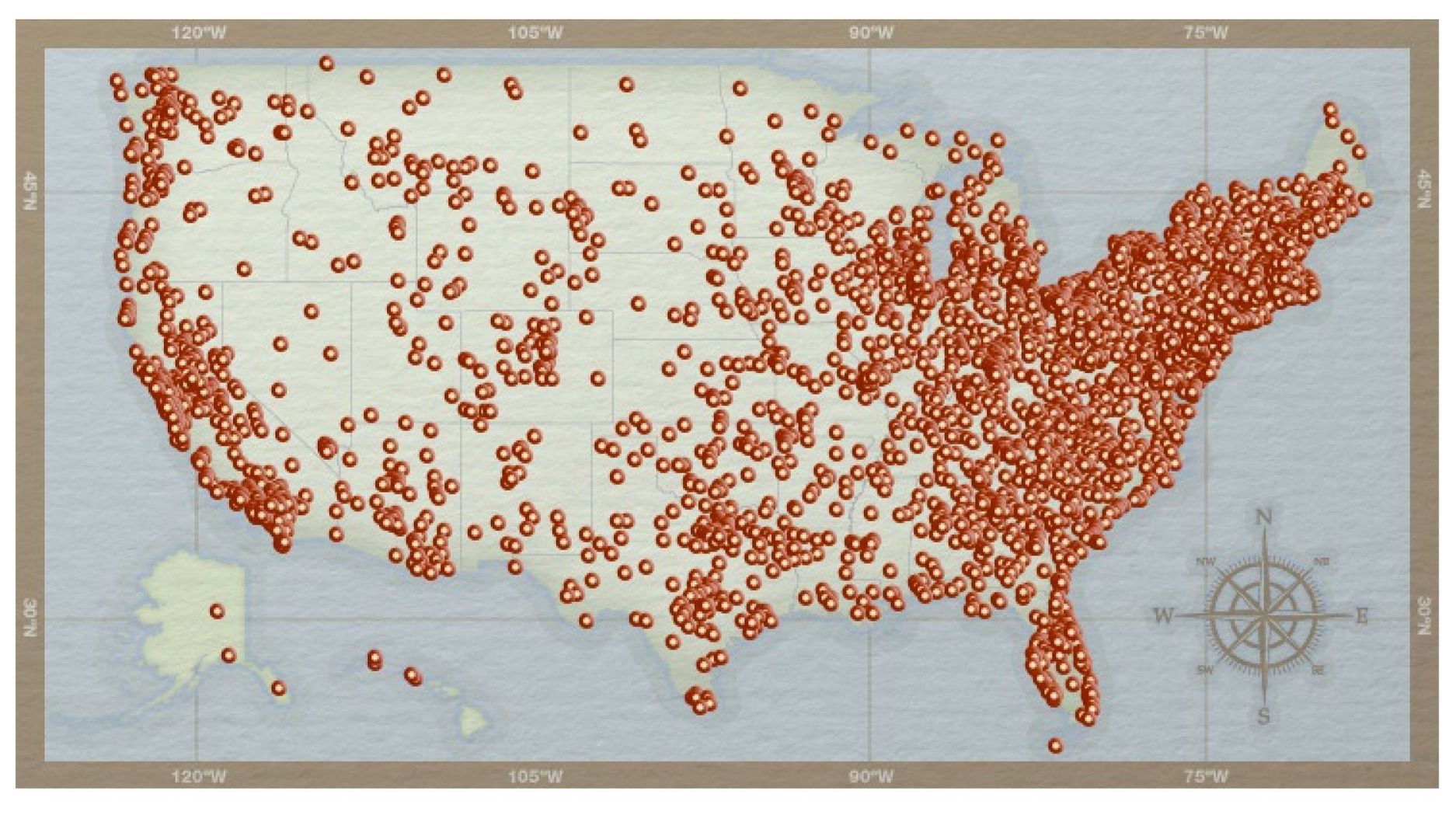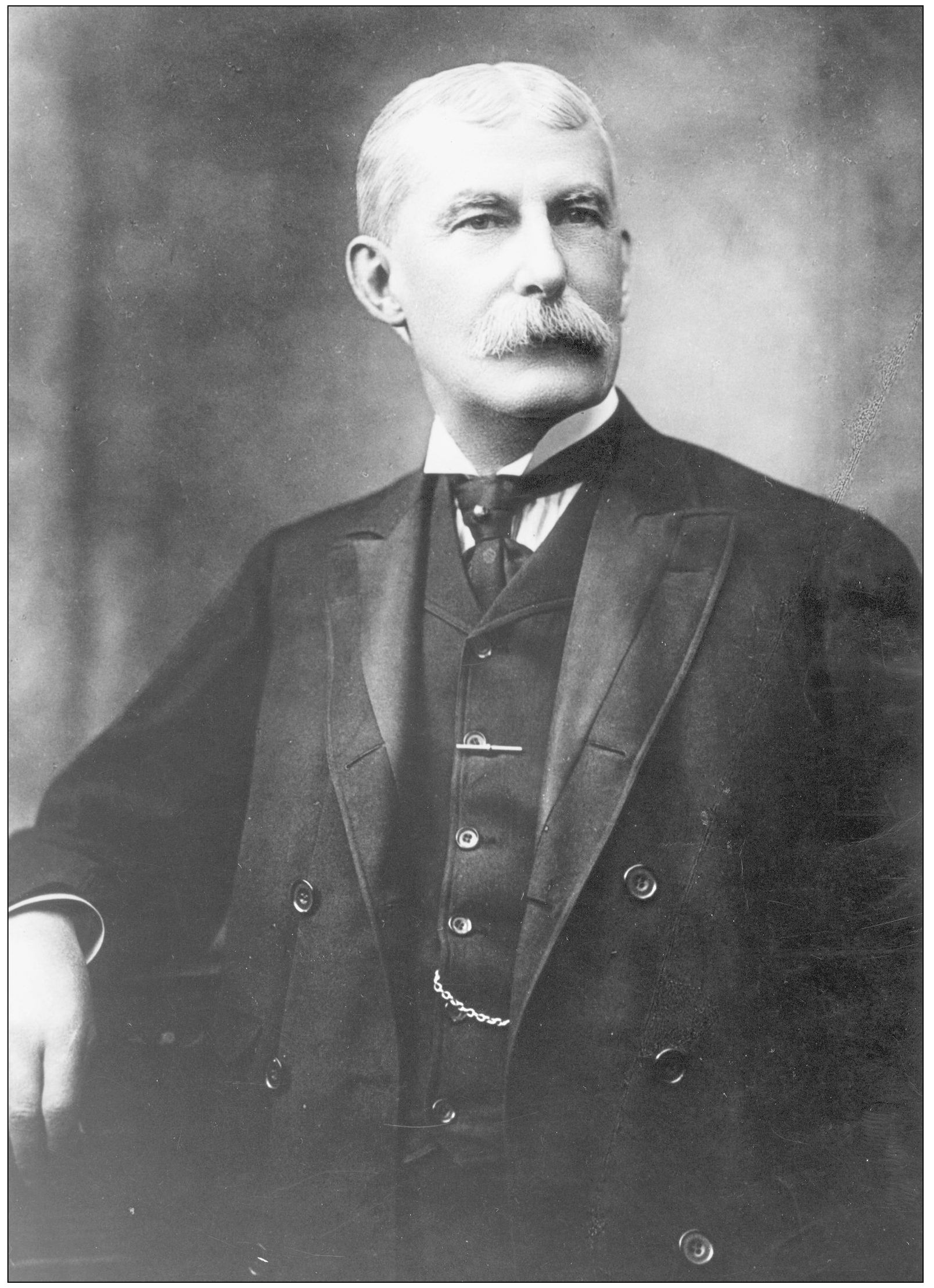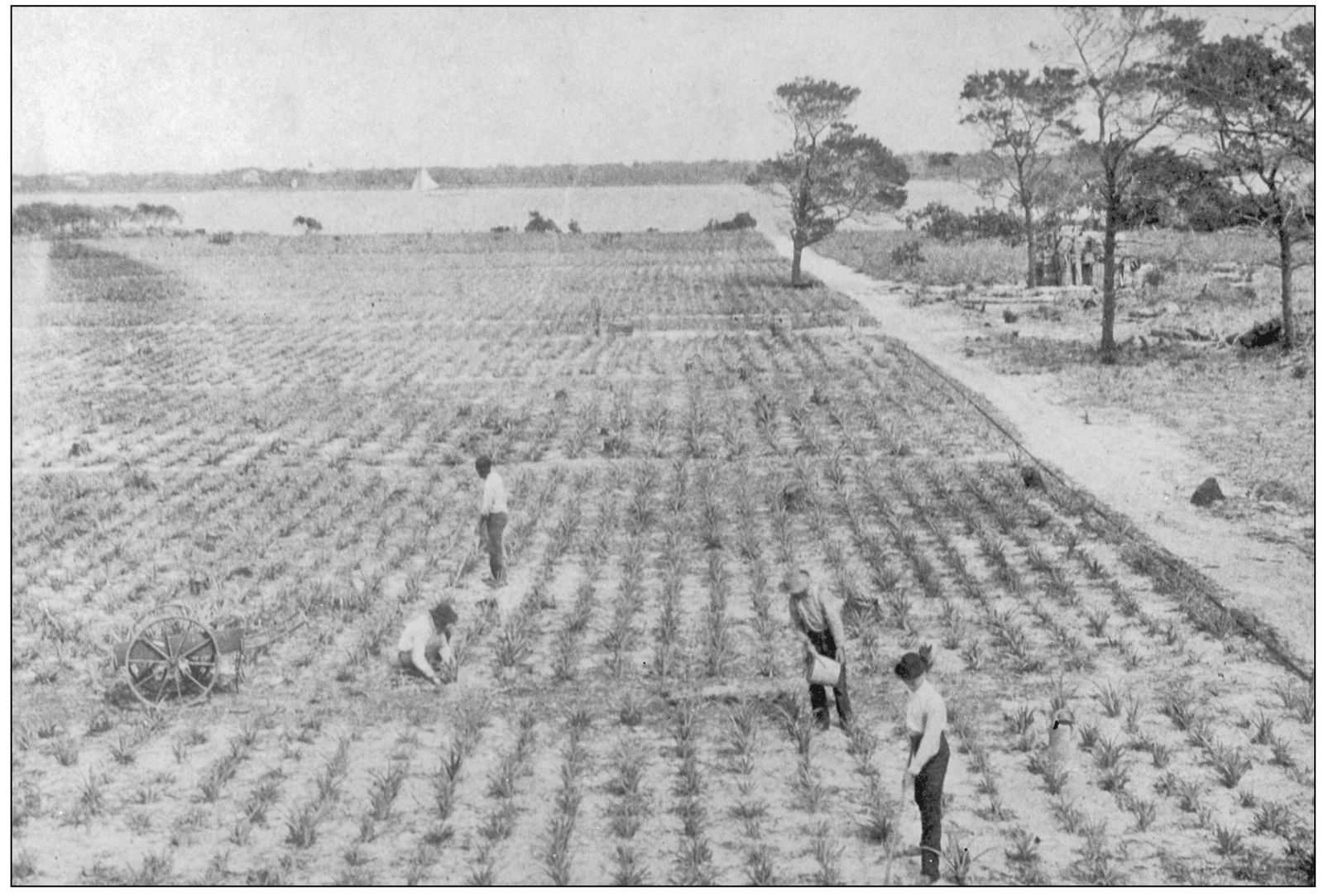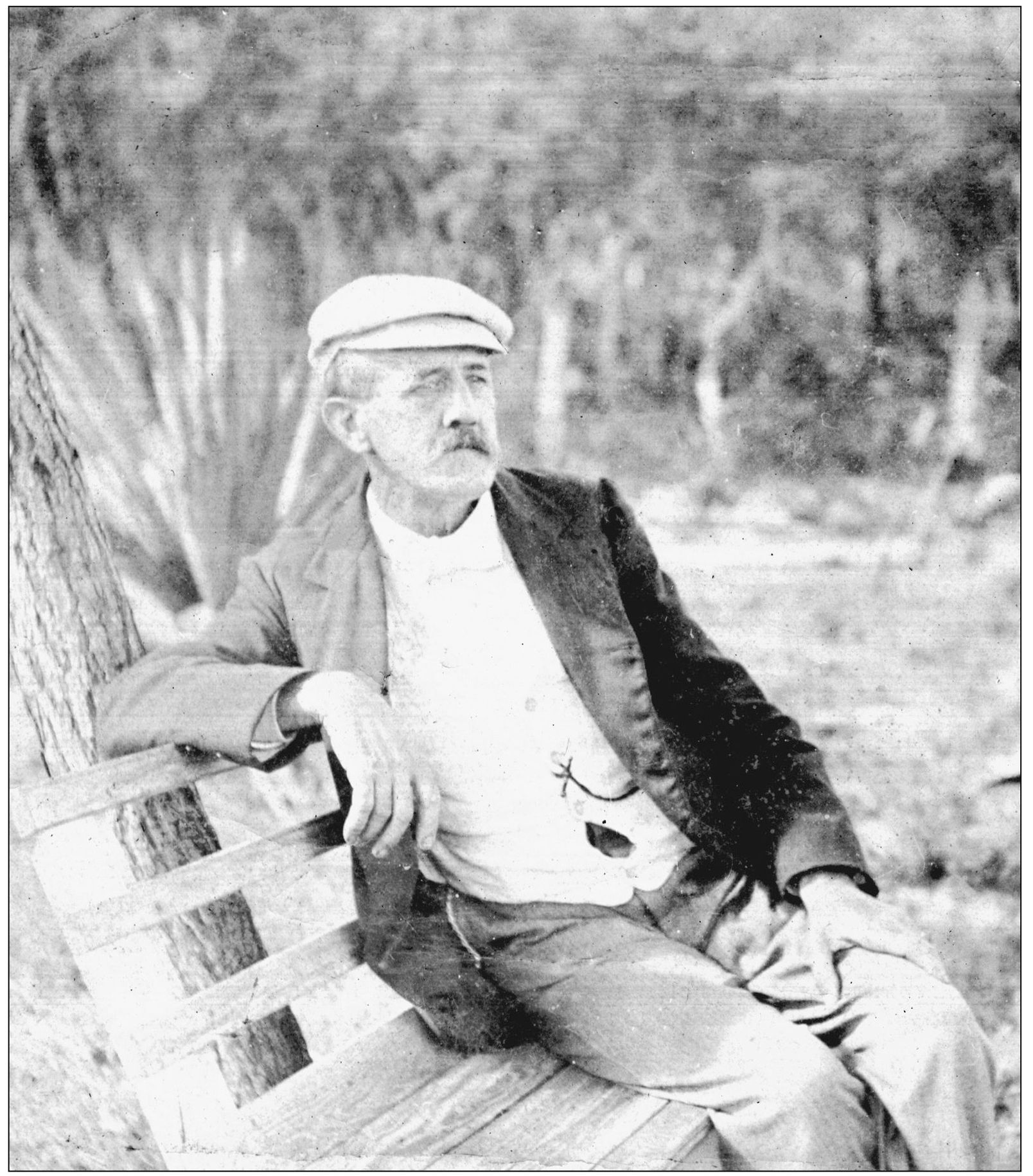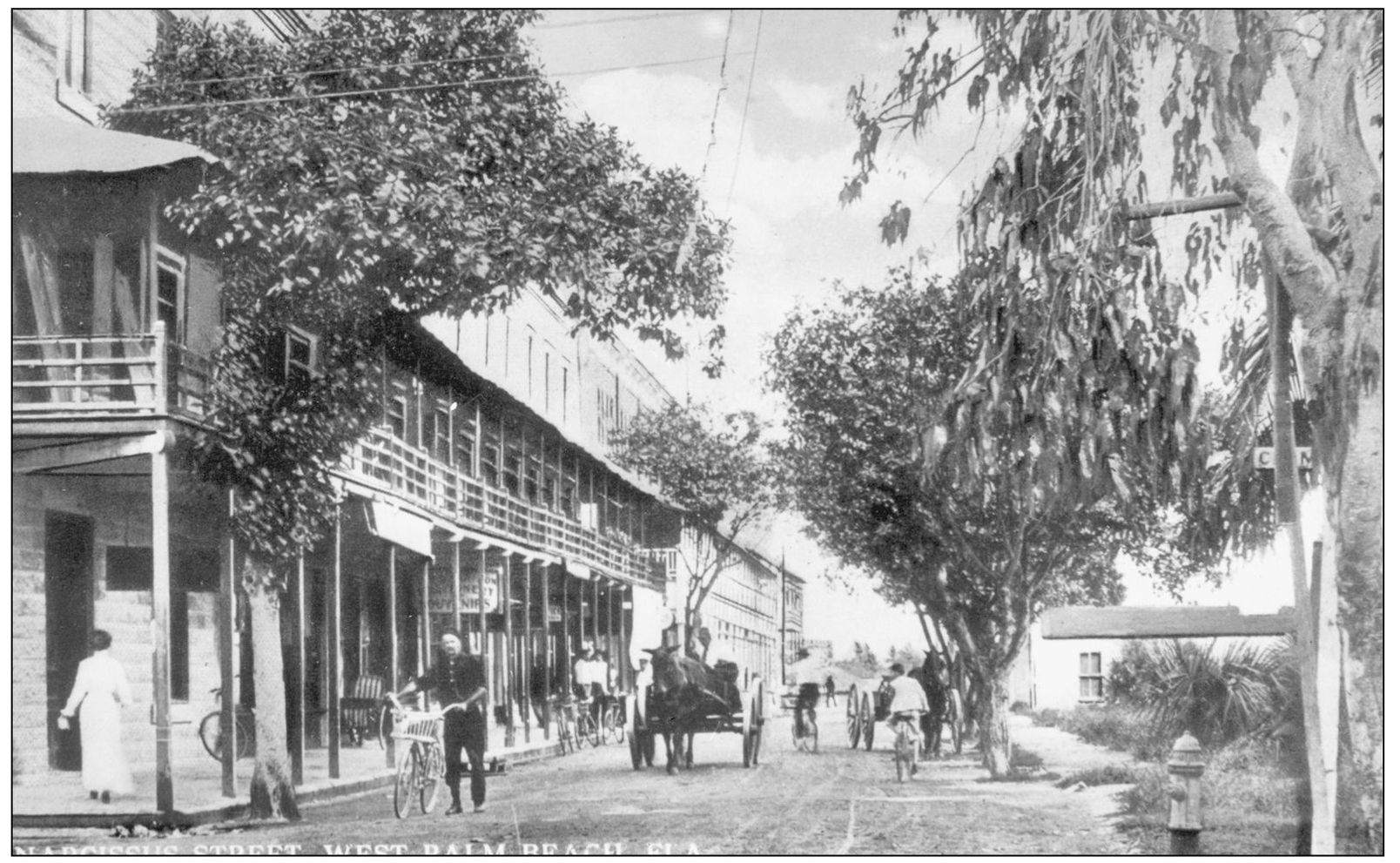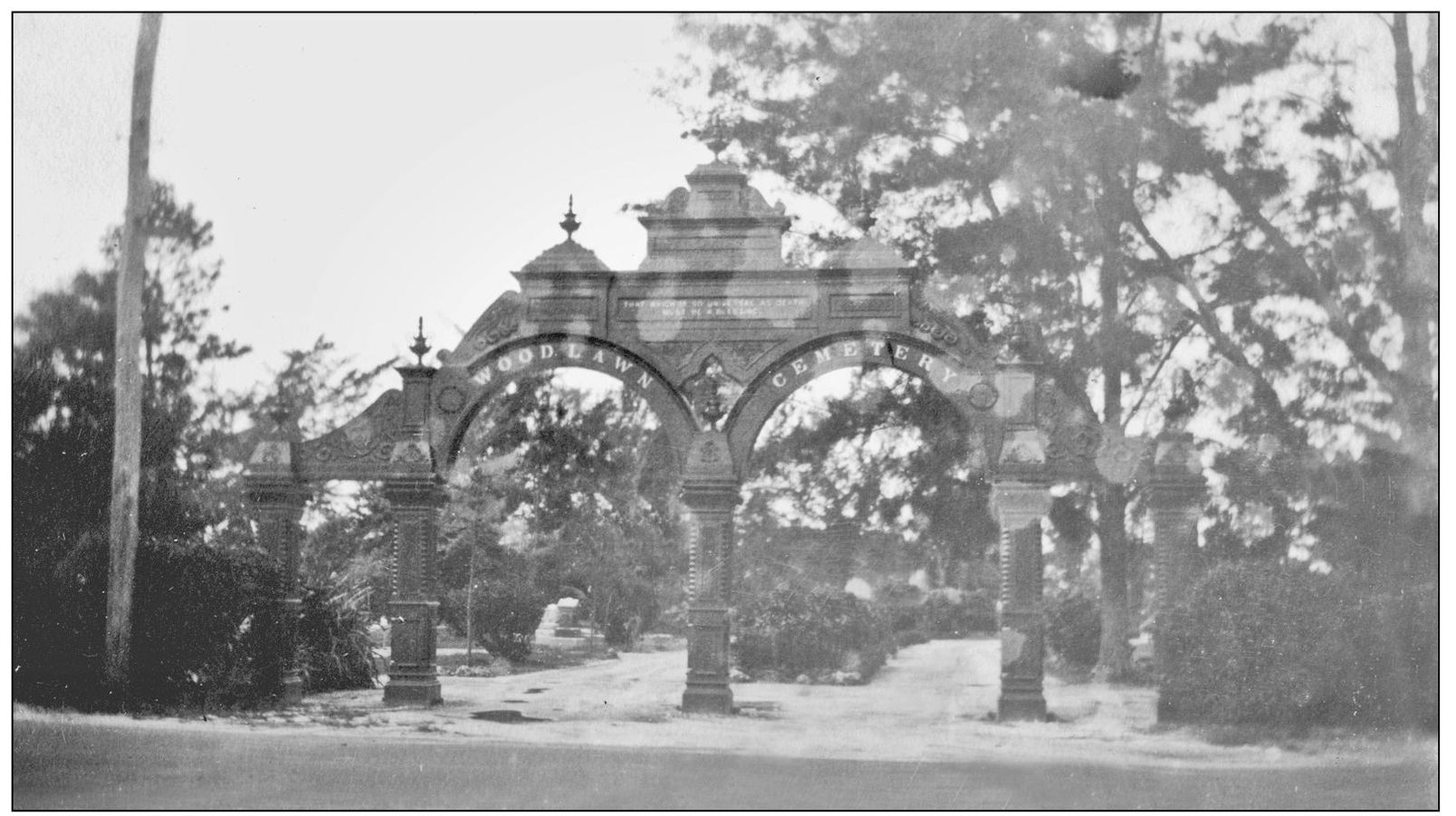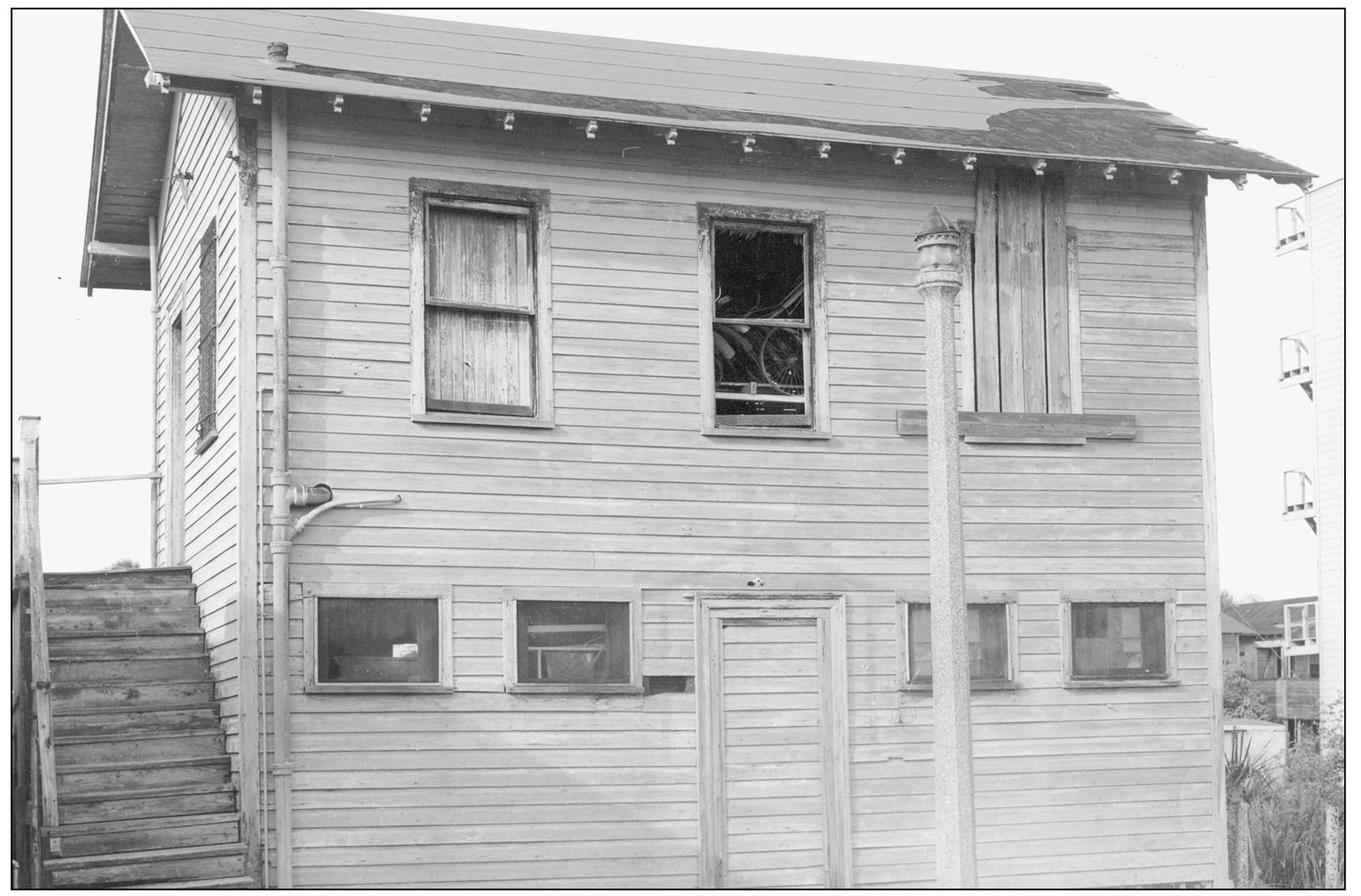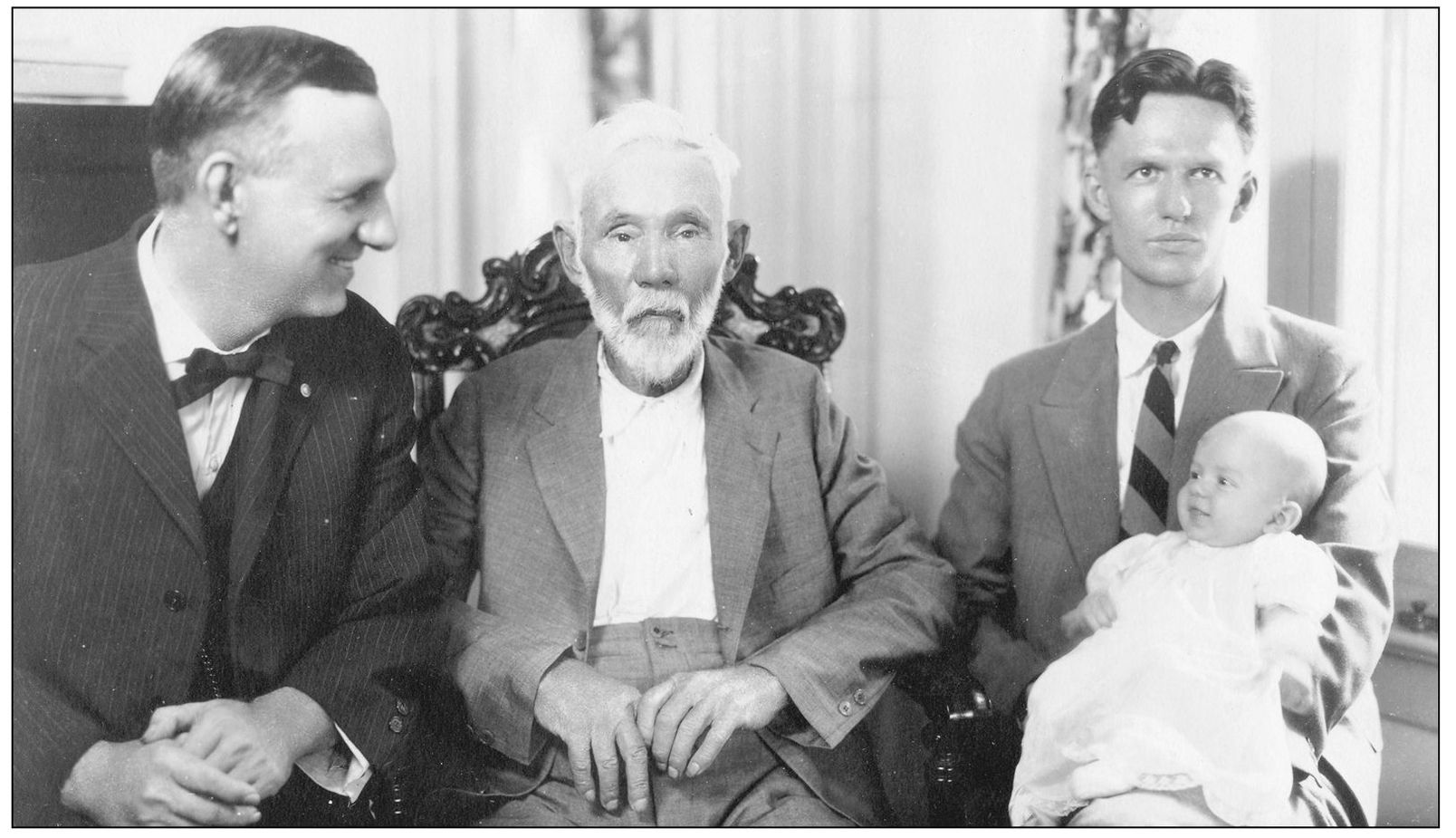One
PIONEERS OF WEST PALM BEACH
In 1893, pioneer surveyor George Potter laid out West Palm Beach as the support center for Henry Flaglers Palm Beach resort. Up to that time, most settlement had been scattered along the east shore of Lake Worth, although a handful of people were living on the mainland. Those early settlers survived by farming, hunting, fishing, and scavenging goods from shipwrecks along the ocean. Items they could not grow, catch, or scavenge had to be shipped from Titusville; several families made their living by running steamers between there and Lake Worth. Despite the remoteness of the area, tourism had also been a thriving business since 1880. At that time, Elisha N. Dimick added rooms to his house and opened the Cocoanut Grove House, the first hotel, on the island of Palm Beach.
Flagler stepped up the tourist business several notches when he built the Royal Poinciana Hotel on Palm Beach and brought the Florida East Coast Railroad to West Palm Beach. This activity brought new people who opened businesses in the fledgling town. More people meant more amenities were needed, including churches, stores, restaurants, saloons, modest hotels, houses, and government. By the end of 1894, West Palm Beach had incorporated as a townthe first municipality in what would become Palm Beach County.
While Palm Beach maintained its status quo as a winter resort destination for the wealthy, it has been the residents of West Palm Beach that pushed their city ahead. It is due to their contributions that the city of West Palm Beach has become the leading metropolis in the county.
Henry Morrison Flagler, longtime partner of John D. Rockefeller, made his millions with Standard Oil Company. After Flagler retired, he came to Florida to build a railroad and hotel empire. The Florida East Coast Railroad arrived in West Palm Beach in 1894, and by 1912, it reached Key West, opening up the entire Florida east coast. Flagler died the following year in Palm Beach.
In the late 19th century, the pineapple industry was the number-one agricultural enterprise in southeast Florida. In 1892, Winfield Scott and Adella Clow of Pittsburgh purchased 49 acres centered on 7th Street from Louis Hillhouse for $2,450. Windella Plantations name was a combination of Winfield and Adellas first names. Above workers are planting pineapples at Windella Plantation. Blight would eventually end Floridas pineapple industry in the early 20th century.
The Royal Poinciana Hotel on Palm Beach could be seen from the Clow residence at Windella Plantation. Clow erected an irrigation system on his plantation using water storage tanks powered by windmills, an innovation for the time. A brochure for Windella states that the company owned 100 acres, part of which was laid out for development and known as the Clow Addition.
Dr. Richard B. Potter, born in 1845 in Massachusetts, left Ohio in 1874 with his younger brother, George W. Potter, and moved south to Biscayne Bay in hopes of improving Georges health. They farmed and harvested coontie to make starch. Richard served Dade County as a U.S. customs inspector and deputy U.S. marshal from 1875 to 1876, and in April 1877, he was appointed clerk of the circuit court. Learning there was a need for a doctor on Lake Worth, they moved in 1881. In 1893, Dr. Potter built a residence with an office on the lakefront near the foot of present Gardenia Street in West Palm Beach and made calls in his naptha launch, stopping to pick up Millie Gildersleeve, a midwife, when a birth was imminent. He died from complications of surgery in 1909 in Jacksonville, Florida.
The first post office was opened in a tent on April 17, 1894, at the northwest corner of Narcissus and Clematis Streets. John Stowers, first postmaster, erected a two-story building on the site with the post office, grocery, and office space. The post office remained in the three-story brick Palms Hotel until 1915, when a new post office was built on the site of the Metcalf Building on North Olive Avenue.
In 1904, Henry Flagler laid out 17 acres of pineapple fields as Woodlawn Cemetery. Located opposite Lakeside Cemetery on the west side of Dixie Highway, this ornamental iron gateway (shown here in December 1920) was erected by Flagler and was inscribed with bronze lettering: That Which Is So Universal As Death Must Be A Blessing. Dixie Highway was widened in 1925, making it necessary to remove the gate.
West Palm Beachs first jail and police station, called the calaboose, was located on the corner of Poinsettia, now Dixie Highway, and Clematis Streets. Local residents met atop the calaboose on November 5, 1894, to vote on the incorporation of the Town of West Palm Beach, and the motion passed 77-1. A new city jail was built at the corner of Rosemary and Banyan Streets in 1921.
Four generations of the Earman family are shown from left to right: Joseph Lucien; the patriarch, John Sites; and John Burke with his son, John Robert. John Sites Earman was the first mayor of West Palm Beach, an office he held from 1894 to 1896. Originally from Virginia, Earman served as a scout in Stonewall Jacksons army during the Civil War and had quite the reputation as a wrestler.

